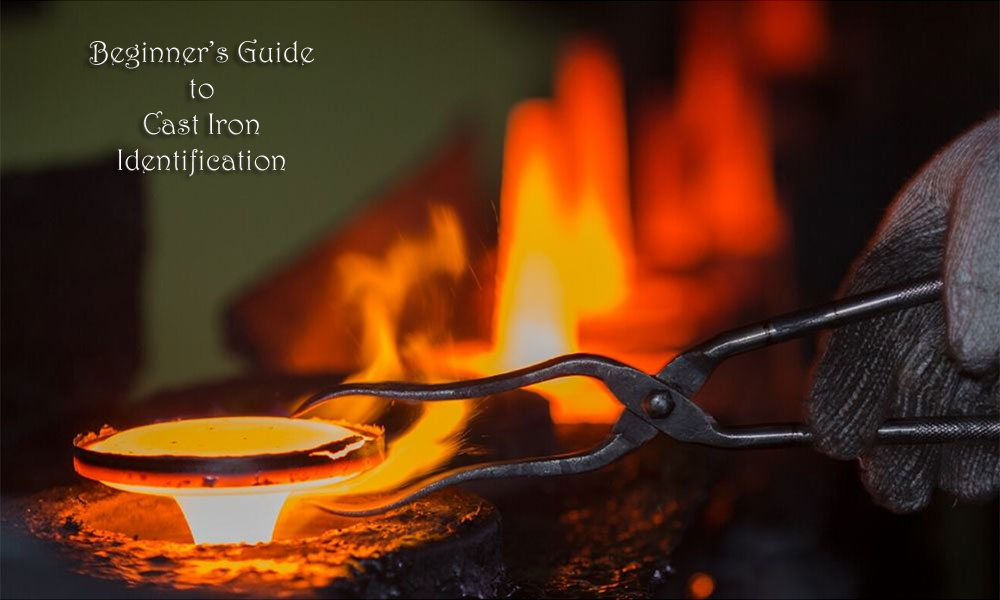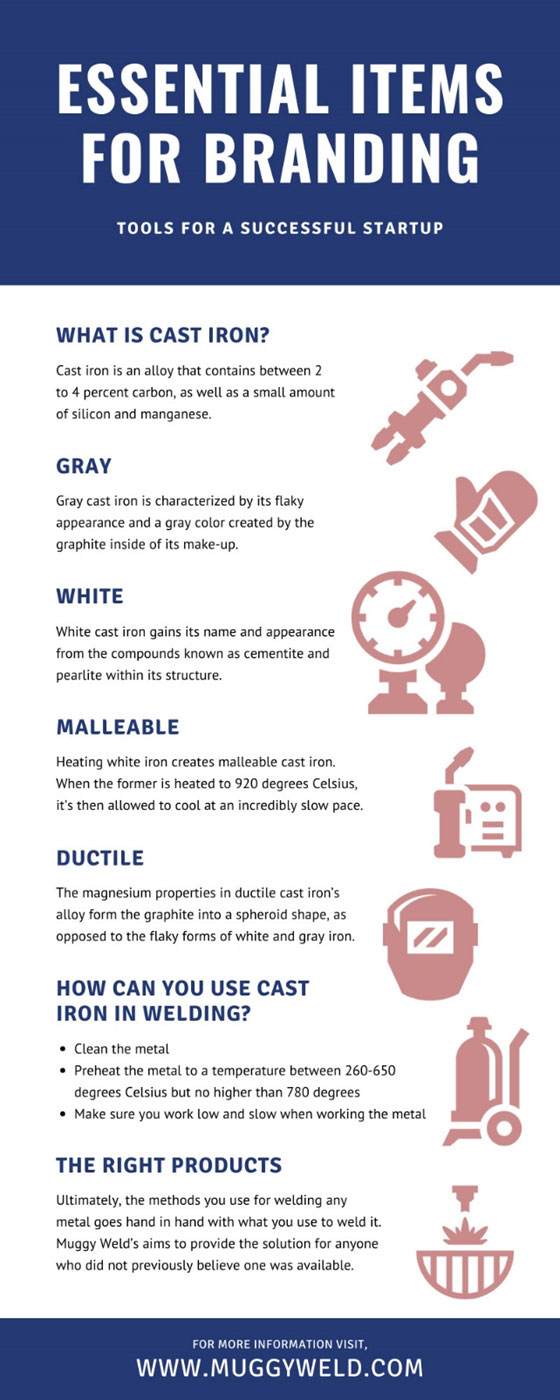
Due to the temperamental nature of all cast iron types, there’s a common—as well as unfortunate—misconception that it’s nearly impossible to create a quality weld using cast iron. Several welders have been misinformed regarding the possibilities found in cast iron when it’s handled properly. It isn’t uncommon for the professionals here at Muggy Weld to receive positive feedback from customers who discovered, at last, what they previously thought was an impossible project was actually manageable after all.
What is Cast Iron?
Cast Iron is an alloy that contains between 2 to 4 percent carbon, as well as a small amount of silicon and manganese. You’ll also commonly find other impurities in cast iron; there are a conglomeration of elements that may make the metal difficult to work with. Cast iron also contains carbon particles that make it prone to cracking or fracturing. Wrought iron, in opposition to cast iron, is a metal you’ll merely heat as opposed to melt, and you can easily shape it as a result. Since it’s malleable, welding often utilizes wrought iron. Unfortunately, this is often not the case with cast iron.
We often associate cast iron with cookware, common utensils, and some buildings. There are different types of cast iron, and it’s useful for metal workers to know which variation they will work with. We’ll give a brief overview of the four cast iron types, which are gray, white, malleable, and ductile.
Gray
Gray cast iron is one of the most widely used forms of cast iron, so any metal workers may wish to familiarize themselves with this type before any other options. Gray cast iron is characterized by its flaky appearance and a gray color created by the graphite inside of its makeup. Gray cast iron’s properties will change depending on what materials are combined when they’re melted together.
Contrary to popular belief, it’s indeed possible to successfully weld certain types of cast iron. Due to its low price, gray cast iron is an attractive option for any projects where it’s applicable. It’s extremely resistant to heat, and it’s also one of the few metals that handles well against thermal cycling (a series of rapid shifts between heat and cold). Some metals will begin to crack if they rapidly switch between drastic temperatures. Gray cast iron is one of the most resistant metals to frequent temperature shifts, so many will utilize it for this purpose.
White
In comparison to other types of cast iron, white iron is the only type where carbon is presented only as carbide. White cast iron gains its name and appearance from the compounds known as cementite and pearlite within its structure. Similar to its gray counterpart, white cast iron features multiple small flakes and fractures.
Unlike its gray counterpart, though, white cast iron has a low carbon and silicone content. This makes it less impact resistant than many types of iron. White cast iron will often get combined with gray to improve its toughness. Though also an inexpensive option, white iron is extremely brittle, which makes it difficult to cut. This comes from the rapid rate at which it cools.
Malleable
Heating white iron creates malleable cast iron. When the former is heated to 920 degrees Celsius, it’s then allowed to cool at an incredibly slow pace. This allows the graphite to slowly separate and form into spheroidal particles. This creates a smoother surface than white iron’s flaky one.
There are two types of malleable cast iron; black-heart and white-heart. White-heart is heated in an oxidized atmosphere so that it can remove the carbon from the surface. The process in which white-heart is cooled takes several days, and it creates an end result highly resistant to fracturing.
Black-heart cast iron is made by annealing it in a neutral atmosphere. It’s then kept at a high temperature for up to four days, and, similar to white-heart, creates a surface without flakes.
As its name suggests, this type of cast iron is the most malleable of its counterparts. You can easily work and manipulate it into a variety of shapes, which makes it ideal for creating unique pieces.
Ductile
The magnesium properties in ductile cast iron’s alloy form the graphite into a spheroid shape, as opposed to the flaky forms of white and gray iron. Ductile cast iron is resistant to wear and damage retained by a strong impact. The absence of flakes makes ductile cast iron more resistant to injury than white or gray iron. Situations that would cause white and grey cast iron to fracture would instead allow ductile iron to bend. While ductile cast iron may be more difficult to work with than other options, its fame lies in its durability.
How Can You Use Cast Iron in Welding?
As we stated above, cast iron is not as impossible to weld as many would believe. Many dismiss items containing cast iron as irreparable. We here at Muggy Weld strive to make welders aware of the fact that they can save money by learning how to work with cast iron. The task merely requires the skill to evaluate the metal you work with it and the methods that will help you achieve the results you need.
We explored a few of the different types of cast iron, and which one you choose to work with will influence the method you use and your ultimate end result. Below, we provide a few points to keep in mind when attempting to weld cast iron:
- Clean the metal
- Preheat the metal to a temperature between 260-650 degrees Celsius but no higher than 780 degrees
- Make sure you work low and slow when working the metal
The Right Products
Ultimately, the methods you use for welding any metal go hand in hand with what you use to weld it. Muggy Weld’s aims to provide the solution for anyone who did not previously believe one was available. We offer high-quality welding products, which range from burnt cast iron electrodes to silver solder. We also have a selection of videos that demonstrate how to carry out difficult repairs. To learn more about the products we offer, don’t hesitate to contact Muggy Weld today.

